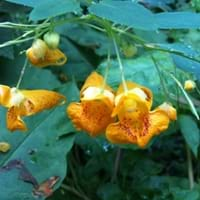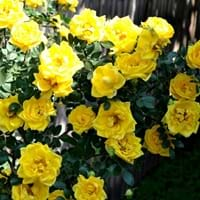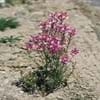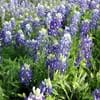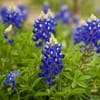Life Span
Annual
Perennial
Type
Fern, Succulent
Perennial
Origin
Africa, Canada, North America, United States
Eastern Europe, Western Asia
Types
impatiens balsaminak, impatiens hawkeri
Rosa Harisons Yellow, Rosa Persica
Habitat
Grassland, River side
gardens, Pastures, Prairies, Terrestrial, Tropical regions
USDA Hardiness Zone
2-11
3-8
AHS Heat Zone
12 - 1
10-1
Sunset Zone
Not Available
1a, 1b, 2a, 2b, 3a, 3b, 4, 5, 6, 7, 8, 9, 10, 11, 12, 13, 14, 15, 16, 17, 18, 19, 20, 21, 22, 23, 24
Habit
Upright/Erect
Oval or Rounded
Flower Color
Yellow, Orange
Yellow
Flower Color Modifier
Bicolor
Not Available
Fruit Color
Green
Non Fruiting Plant
Leaf Color in Spring
Green
Not Available
Leaf Color in Summer
Green
Not Available
Leaf Color in Fall
Green
Not Available
Leaf Color in Winter
Light Green
Light Green
Leaf Shape
Elliptic, toothed
Pinnate
Plant Season
Summer, Fall
Summer, Fall
Sunlight
Partial Sun, Partial shade
Full Sun, Partial Sun
Type of Soil
Loam, Sand
Loam, Sand
The pH of Soil
Acidic, Neutral
Acidic, Neutral
Soil Drainage
Average
Well drained
Bloom Time
Summer, Late Summer, Early Fall
Early Summer, Summer, Late Summer, Early Fall
Tolerances
Pollution
Drought
Where to Plant?
Ground
Ground, Pot
How to Plant?
Stem Planting, Transplanting
Grafting, Stem Planting, Transplanting
Plant Maintenance
Low
Medium
Watering Requirements
Needs less watering
Form a Soil ring to water efficiently, Requires regular watering, Water twice a day in the initial period, Water when soil is dry
In Summer
Moderate
Lots of watering
In Spring
Moderate
Moderate
In Winter
Average Water
Average Water
Soil pH
Acidic
Acidic, Neutral
Soil Type
Clay
Loam, Sand
Soil Drainage Capacity
Clay, Moist
Well drained
Sun Exposure
Bright direct sunlight
Full Sun, Partial Sun
Pruning
Prune lower leaves, Prune ocassionally
Prune if you want to improve plant shape, Remove damaged leaves, Remove dead leaves, Remove deadheads, Shape and thin as needed
Fertilizers
Fertilize only when soil is poor
All-Purpose Liquid Fertilizer, organic fertlizers
Pests and Diseases
Bacteria wilt, Downy mildew, Drought
Aphids, Bacterial Diseases, Mites, Slugs
Plant Tolerance
Drought, Dry soil
Drought
Flower Petal Number
Single
Not Available
Edible Fruit
No
Not Available
Foliage Texture
Medium
Not Available
Foliage Sheen
Matte
Not Available
Attracts
Bees, Butterflies, Hummingbirds
Not Available
Allergy
allergic conjunctivitis, Asthma, Runny nose
no allergic reactions
Aesthetic Uses
Cottage Garden
Beautification, Bouquets
Beauty Benefits
Poison Ivy
Not Available
Edible Uses
Sometimes
Yes
Environmental Uses
soil erosion prevension on hill slopes
Air purification
Medicinal Uses
antimicrobial, treating poison ivy, Upset stomach
No Medicinal Use
Part of Plant Used
Bark, Leaves
Flowers
Other Uses
Can be made into a herbal tea
Showy Purposes, Used as Ornamental plant
Used As Indoor Plant
No
No
Used As Outdoor Plant
Yes
Yes
Garden Design
Cottage garden
Container, Cutflower, Feature Plant, Foundation, Mixed Border
Botanical Name
IMPATIENS capensis
Rosa foetida
Common Name
Jewelweed
Austrian briar, Persian yellow rose, Austrian copper rose
In Hindi
Not Available
Persian Yellow Rose
In German
Impatiens capensis
Persian Yellow Rose
In French
Impatiente du Cap
Persian Yellow Rose
In Spanish
Impatiens capensis
Persian Yellow Rose
In Greek
Impatiens capensis
Persian Yellow Rose
In Portuguese
Impatiens capensis
Persian Yellow Rose
In Polish
Impatiens capensis
Persian Yellow Rose
In Latin
Impatiens capensis
Persian Yellow Rose
Phylum
Magnoliophyta
Not Available
Class
Magnoliopsida
Not Available
Family
Balsaminaceae
Rosaceae
Clade
Dicotyledonous
Angiosperms, Eudicots, Rosids
Tribe
Not Available
Not Available
Subfamily
Not Available
Rosoideae
Number of Species
Not Available
Season and Care of Jewelweed and Persian Yellow Rose
Season and care of Jewelweed and Persian Yellow Rose is important to know. While considering everything about Jewelweed and Persian Yellow Rose Care, growing season is an essential factor. Jewelweed season is Summer and Fall and Persian Yellow Rose season is Summer and Fall. The type of soil for Jewelweed is Loam, Sand and for Persian Yellow Rose is Loam, Sand while the PH of soil for Jewelweed is Acidic, Neutral and for Persian Yellow Rose is Acidic, Neutral.
Jewelweed and Persian Yellow Rose Physical Information
Jewelweed and Persian Yellow Rose physical information is very important for comparison. Jewelweed height is 90.00 cm and width 30.00 cm whereas Persian Yellow Rose height is 70.00 cm and width 100.00 cm. The color specification of Jewelweed and Persian Yellow Rose are as follows:
Jewelweed flower color: Yellow and Orange
Jewelweed leaf color: Green
Persian Yellow Rose flower color: Yellow
- Persian Yellow Rose leaf color: Not Available
Care of Jewelweed and Persian Yellow Rose
Care of Jewelweed and Persian Yellow Rose include pruning, fertilizers, watering etc. Jewelweed pruning is done Prune lower leaves and Prune ocassionally and Persian Yellow Rose pruning is done Prune if you want to improve plant shape, Remove damaged leaves, Remove dead leaves, Remove deadheads and Shape and thin as needed. In summer Jewelweed needs Moderate and in winter, it needs Average Water. Whereas, in summer Persian Yellow Rose needs Lots of watering and in winter, it needs Average Water.
